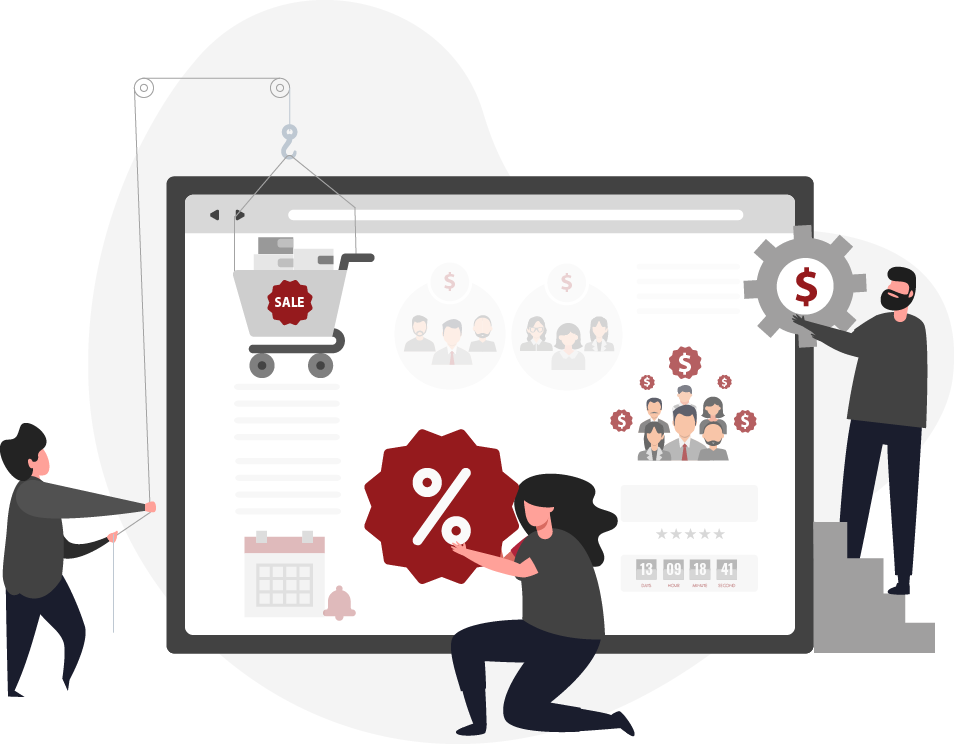Small businesses are a huge part of the economy, and they represent 99.7% of all employer firms in America. The United States Small Business Administration (SBA) defines a small business as an enterprise with fewer than 500 employees or less than $35 million in annual revenue.
This article will explore seven strategies that will help you increase your profit and revenue for your small business.
Post Contents
- 1 What Strategies Can You Use To Increase Profit For Your Business?
- 2 How Can Your Business Improve Its Profitability?
- 2.1 1. Determine Your Target Audience
- 2.2 2. Offer a Free Trial or Sample to Entice Customers
- 2.3 3. Create an Engaging Social Media Presence
- 2.4 4. Offer Discounts for First-Time Customers or Returning Customers
- 2.5 5. Include Testimonials From Happy Clients on Your Site
- 2.6 6 . Consider Partnering With Other Businesses to Cross-Promote Each Other’s Products or Services
- 2.7 7 . Develop a Referral Program Where Existing Clients Can Get Rewards if They Refer New Business to You
- 3 What Is A Reasonable Profit Margin For A Small Business?
- 4 Final Words
What Strategies Can You Use To Increase Profit For Your Business?
It is estimated that small businesses will spend $64 billion on information technology this year, so investing here can be a great way to increase your revenue and profit margin. In addition, investing in the latest software and hardware for your business will help you save money by creating efficiencies and cutting costs with things like cloud computing services.
Cut down spending everywhere else. You may feel tempted to take out as many loans as possible when it comes time to grow or expand because of how expensive growth can be.
Having an expert should be considered to help with your decisions, for instance, if you’re thinking: is a tax preparer near me or an accounting firm worth it? These experts will help you decide which new expenses should not come at the cost of the other areas where you are already cutting back.
If there are any ways you could bring in more cash without having to sell assets or taking on debt, do those first before resorting to outside sources.
Use the power of social media to increase your brand and draw in new customers for the future. Posting on Facebook or Instagram, even once a week, can keep you top-of-mind with potential clients looking for what you have to offer.
You could also create an email list where people sign up every time they visit your website. Then, their contact information is automatically imported into MailChimp when they opt to receive emails from you. This way, it becomes easier to reach out at any point in time without needing their data each time.
How Can Your Business Improve Its Profitability?

There are many ways your small business can increase its profitability to grow and maintain success. These strategies include:
1. Determine Your Target Audience
Determining your target audience by using social media ads or carefully considering the demographics of a location you’re looking into opening up shop at. This will help you create targeted content that people will be more likely to respond well to.
It also helps with marketing campaigns down the line since they’ll be aimed towards potential customers rather than random people who may not need what you offer yet still receive unwanted emails from businesses.
2. Offer a Free Trial or Sample to Entice Customers
Offering free trials for new products or services on an initial purchase when possible, so consumers have a chance to see if they like what’s being offered. This can be done via a coupon code or something that customers have to enter at checkout.
3. Create an Engaging Social Media Presence
Creating an engaging social media presence on Facebook, Twitter, Pinterest, and Instagram with high-quality content about your business’s services or products for the types of people you want to reach.
You should also get involved in conversations by answering questions from potential clients when possible. This will help them see how invested you are in their needs and show off what makes your company different from others who may offer similar products/services.
4. Offer Discounts for First-Time Customers or Returning Customers

Offering discounts for first-time purchases or repeat shoppers, so they become more loyal customers and don’t shop around unnecessarily looking for lower prices elsewhere without having tried out what you’re offering already.
5. Include Testimonials From Happy Clients on Your Site
Including testimonials from happy clients on your website and in print ads shows what people have to say about using your services. Social proofs are one of the most effective marketing strategies to increase your sales.
6 . Consider Partnering With Other Businesses to Cross-Promote Each Other’s Products or Services
Possibly partnering with other businesses so you can cross-promote each other’s products or services, which will result in more referrals for both of you. This is a good idea if the company has different target audiences or offers complimentary items/services where one may not be as popular as the other but could potentially get some sales based on word of mouth.
7 . Develop a Referral Program Where Existing Clients Can Get Rewards if They Refer New Business to You
Developing a referral program where existing customers are rewarded when referring to new business; encourages them to keep shopping at your store by giving them a sense of ownership. It also helps you get more new clients.
What Is A Reasonable Profit Margin For A Small Business?

For your business to thrive, you need a reasonable profit margin. This is the difference between what it costs you and how much money you make. You may be wondering what that percentage should be to stay afloat financially?
It’s challenging to provide an exact answer since this number varies from industry to industry and company to company. However, there are some guidelines on where the ideal range falls:
- 25% – 35%: A good rule of thumb for many startups with low overhead or businesses just starting. Achieving 25%-35% means not only can your firm operate without losing money but also allows it flexibility if new opportunities arise, which may require a greater investment of capital.
- 40% – 50%: This is the generally accepted benchmark for what many believe to be a healthy profit margin. In this range, your company can comfortably weather any unforeseen storms and still thrive without sacrificing its future potential
Figure out where you fall on the spectrum so that you’re not guessing about how much money needs to be budgeted to keep your business afloat.
Final Words
Implementing these strategies will help you to optimize your business profit and revenue. You may not be able to implement all of them, but if executed well, even one can provide a significant benefit for your bottom line.






























